All over the world, ancient civilizations have left behind a precious architectural legacy. Historical events and the passage of time have sometimes damaged or partially destroyed these monuments, but the ruins that remain are, for some, still very impressive. These are castles, temples or even mysterious buildings. They remain fascinating edifices to discover, and teach us more about the lives of those who inhabited the earth in centuries gone by. From Europe to Asia, Africa to South America, here are 10 of the world's most beautiful ruins.
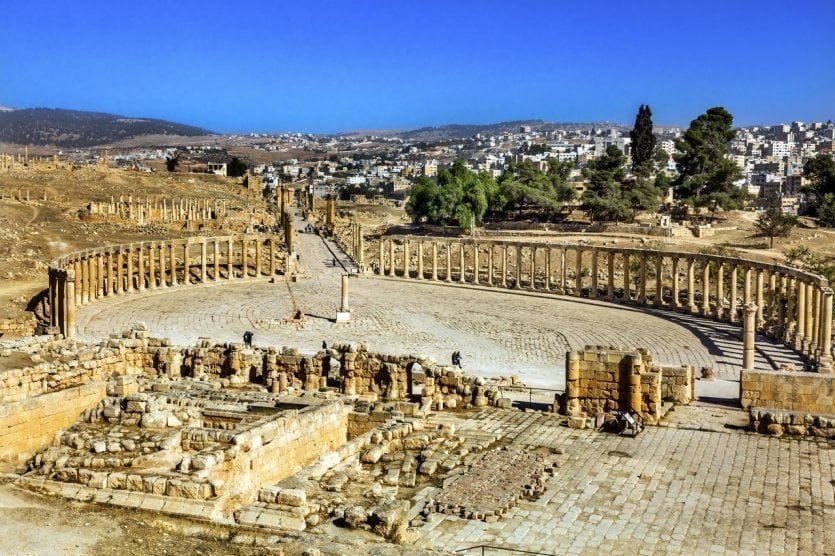
Oval square, Jerash © Bill Perry - Shutterstock.com
1- Ta Prohm temple, Cambodia

Ta Prohm© Efired - Shutterstock.com
Built in the 12th century, this Buddhist temple is one of the most incredible on theAngkor site. Built during the reign of Jayavarman VII, it served as a monastery and university. It is surrounded by a large enclosure and features a gopura decorated with the 4 typical Angkor faces at each cardinal point. There are corridors and moats, and observing the details of the structure is a divine experience. We're also always surprised to see nature reclaiming its rights, notably the enormous roots of trees known as fromagers, which in places invade the monument.
2- The site of Baalbek, Lebanon
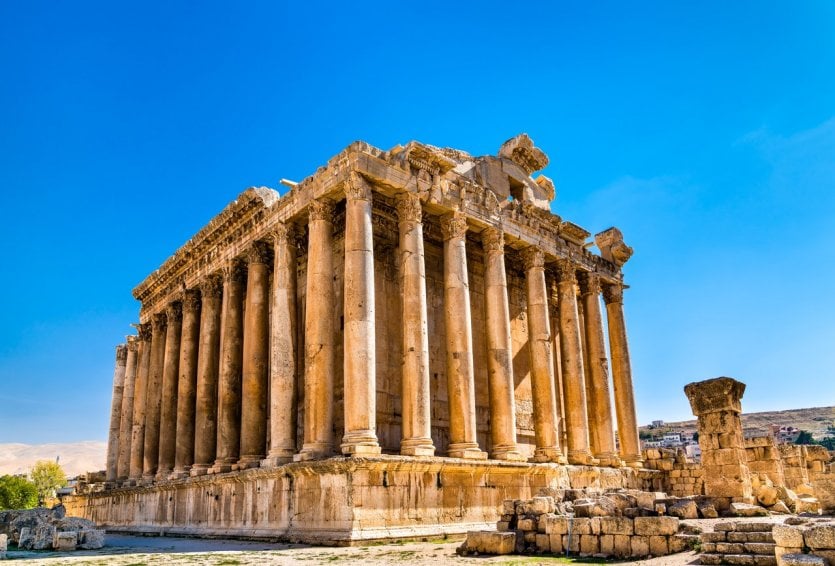
Roman Temple of Bacchus in Baalbek, Lebanon © Leonid Andronov - Shutterstock.com
North-east of Beirut, in the town of Baalbek, lie the gigantic remains of temples built almost 5,000 years ago by the Phoenicians. Every year, this ancient Lebanese city welcomes numerous visitors who come to enjoy the splendour of the temples of the Muses, Bacchus, one of the best preserved from the Greco-Roman era, and Jupiter, which still boasts six impressive columns just over 22 m high. Every summer since 1955, Balbeek has hosted an international festival where artists from all over the world, including orchestras, ballets and opera singers, come to perform in the heart of this site of rare beauty.
3- Ancient Messene, Greece
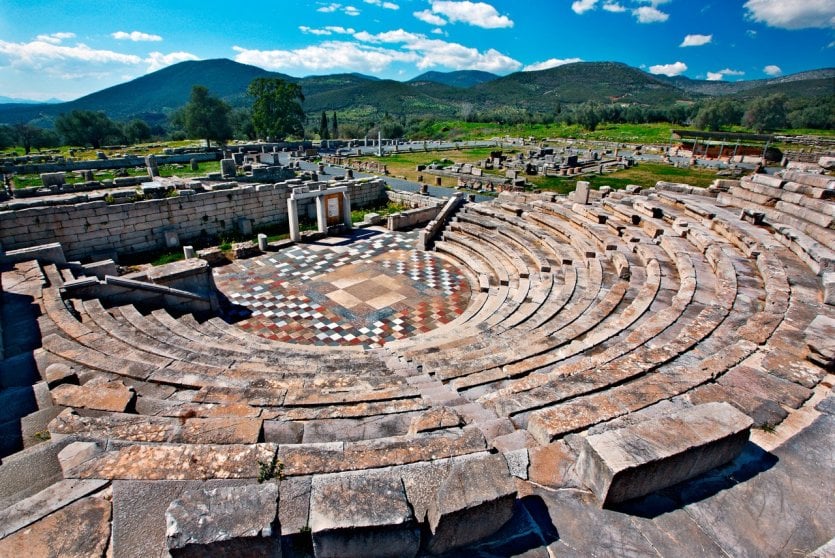
Ancient Messene Theater © Heracles Kritikos - Shutterstock.com
Everyone knows Greece as one of Europe's countries of incredible ancient beauty. In the south-western Peloponnese, the ancient city of Messene flourished in the 4th century BC. According to some experts, excavations to date have revealed just over a third of the remains, including temples, statues, sanctuaries, a gymnasium, a theater and an agora. A visit to this beautiful site will leave a lasting impression, not least because it is surrounded by sublime rolling green countryside.
4- Wat Ratchaburana, Thailand
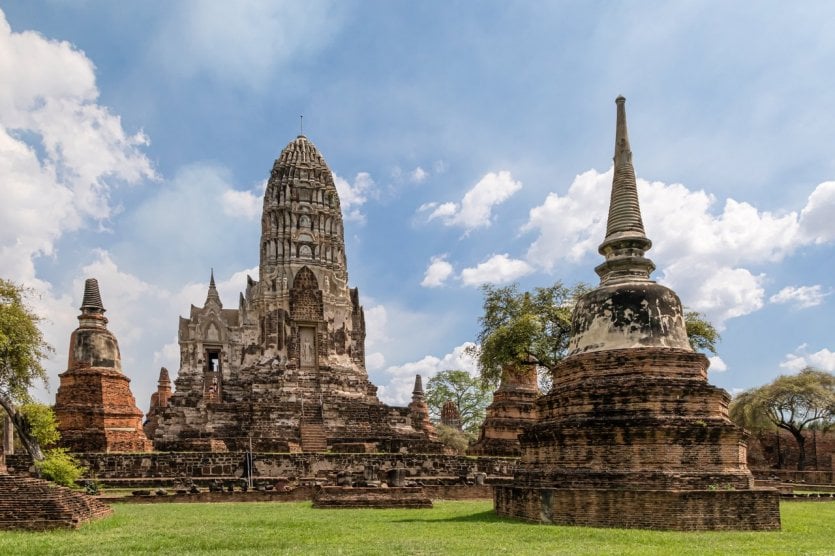
Wat Ratchaburana© Uwe Aranas - Shutterstock.com
Located inAyutthaya's historic park, Wat Ratchaburana is one of the most beautiful Khmer temples on the site. This 600-year-old sanctuary was built as a place of worship, but also as a crematorium. The exceptional beauty of its stone prang is a testament to the city's golden age, and a reminder of the grandeur and prestige of the vanished empire. It's possible to go inside and climb a staircase leading to two chambers where paintings are still visible on the walls. For your information, Wat Ratchaburana is usually visited in tandem with Wat Mahathat, just opposite.
5-Ellorâ Caves, India
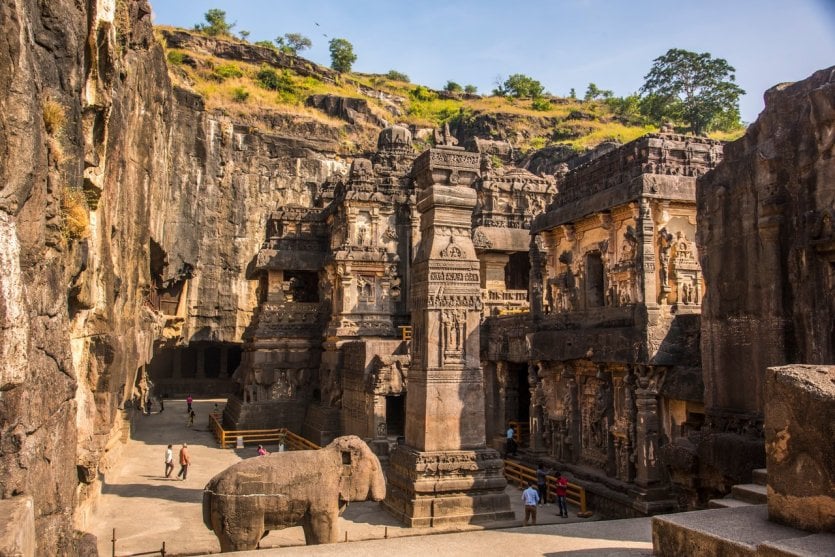
Kailâsanâtha Temple, Ellorâ Caves © CRS PHOTO - Shutterstock.com
30 km from the town of Aurangâbâd lie 34 monasteries and temples carved into the face of a high basalt cliff. A sublime troglodytic architecture built in the early 7th century, the sanctuaries were dedicated to the cults of Buddhism, Jainism and Brahmanism, perfectly evoking the spirit of tolerance of ancient India. The details carved into the stone are very impressive and intricate, and the Kailâsanâtha temple is certainly the most beautiful on the site, excavated from the cliff and twice the size of the famous Parthenon in Athens.
6- Dunluce Castle, Northern Ireland
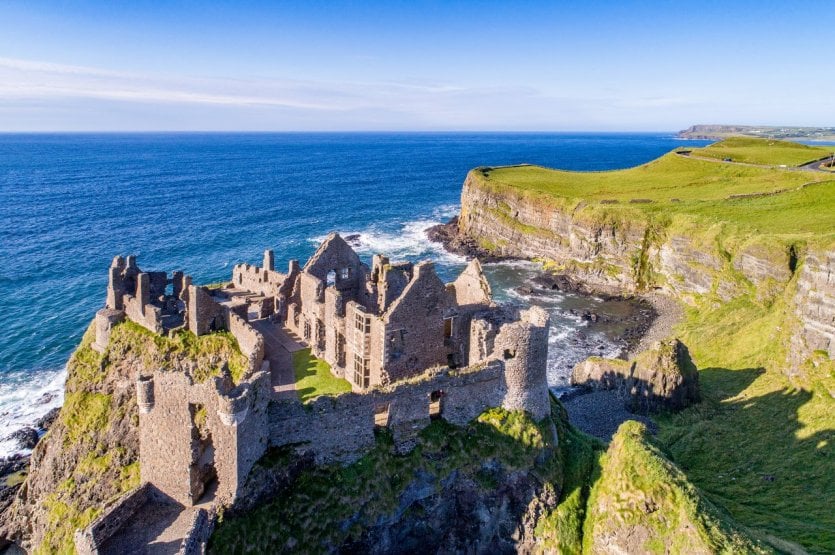
Ruins of medieval Dunluce Castle, Northern Ireland © Nahlik - Shutterstock.com
In Northern Ireland, Dunlunce Castle was first built in the 13th century on top of a gigantic cliff overlooking the sea. At the time, this was a strategic position from which to watch for enemy ships approaching from inland. After passing through the hands of the MacQuillan family until the 16th century, and then into English hands under the command of Sorley Bob McDonnell, the monument was caught in a terrible storm in 1639, destroying many parts and leaving behind the present ruins. Today, it is possible to visit the interior and exterior of one of Northern Ireland's finest heritage buildings.
7- The city of Jerash, Jordan
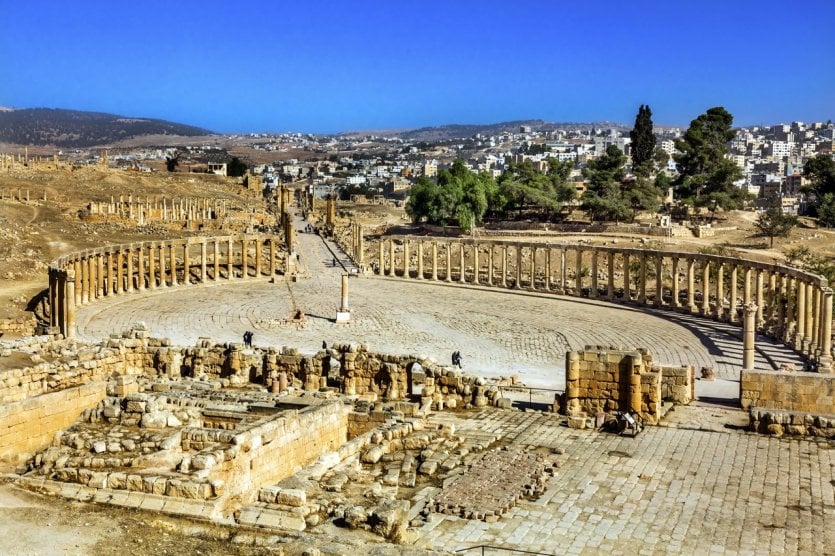
Oval square, Jerash © Bill Perry - Shutterstock.com
After Petra, Jerash is Jordan's second-largest tourist destination, where visitors come to contemplate one of the world's most spectacular and best-preserved Greco-Roman sites. Jerash was occupied by the Romans before being abandoned around the 12th century. It then lay buried under sand for centuries, before being rediscovered. Not-to-be-missed features include the southern theater seats, the theater stage wall, the Temple of Zeus, the Cardo Maximus and the Oval Square. Jerash is a destination of choice for lovers of ancient architecture.
8- Butrint, Albania
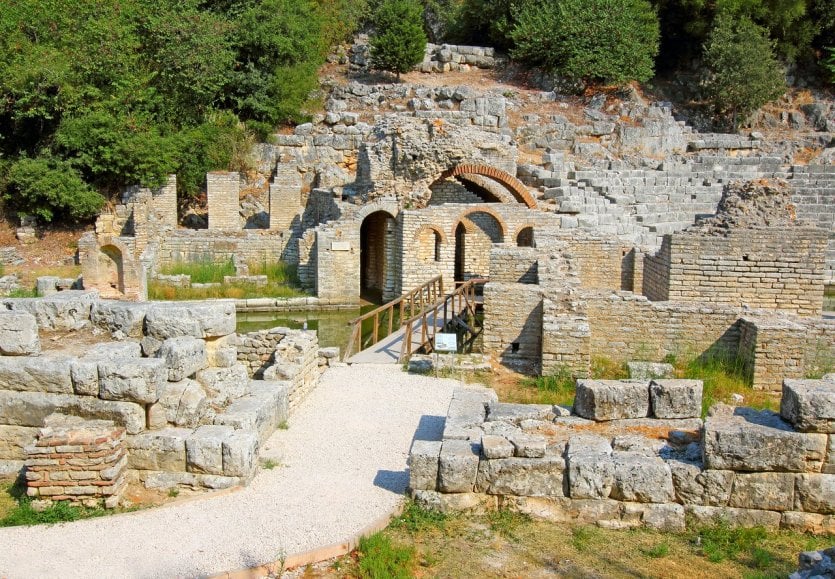
Butrint archaeological site© Pecold - Shutterstock.com
Located just a few kilometers from the pleasant Albanian seaside resort of Saranda, the ruins of the Butrint archaeological site are definitely worth a visit. For fans of antiquity and Greek and Roman remains, the site boasts such interesting features as the columns of the baptistery of a 6th-century church, an agora and a theater with extremely well-preserved tiers and stage. Beyond its architectural splendor and its understanding of the organization of life in the ancient city, the site's charm lies in its exceptional location on a hill, on a peninsula between the Adriatic and the Vivari canal.
9- Tiwanaku archaeological site, Bolivia
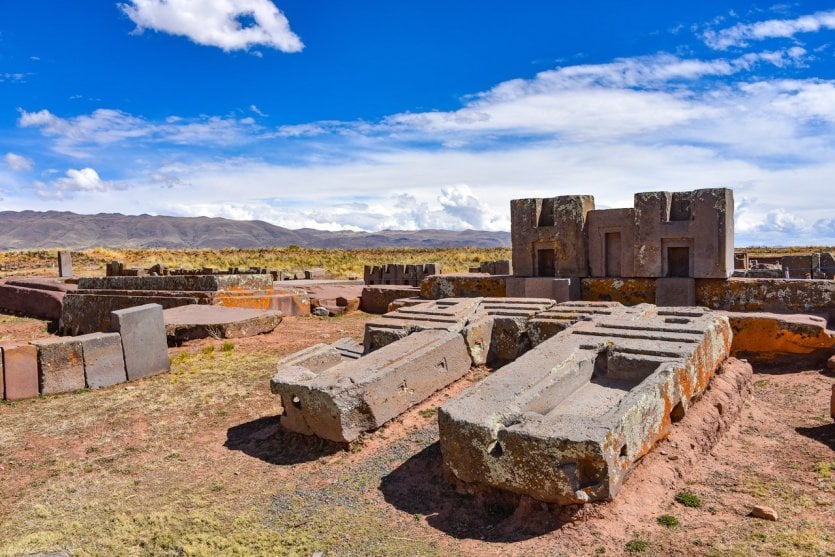
Tiwanaku archaeological site© Mark Green - Shutterstock.com
The Tiwanaku site lies at an altitude of 3,850 m, some 15 km south of Lake Titicaca in Bolivia. It is a landmark for anyone interested in pre-Columbian architecture. Here you'll find a series of remarkable buildings forming the ceremonial ensemble of the Tiwanaku civilization. The most impressive monument among the remains is the Akapana temple, an 18 m-high pyramid made up of seven platforms. Also not to be missed are the Sun Gate with its sublime motifs, the Puma Punku pyramid and the various monoliths. The Ponce monolith is a 3 m-high statue of a priest, covered with engravings representative of Aymara iconography.
10- The pyramids of Meroe, Sudan
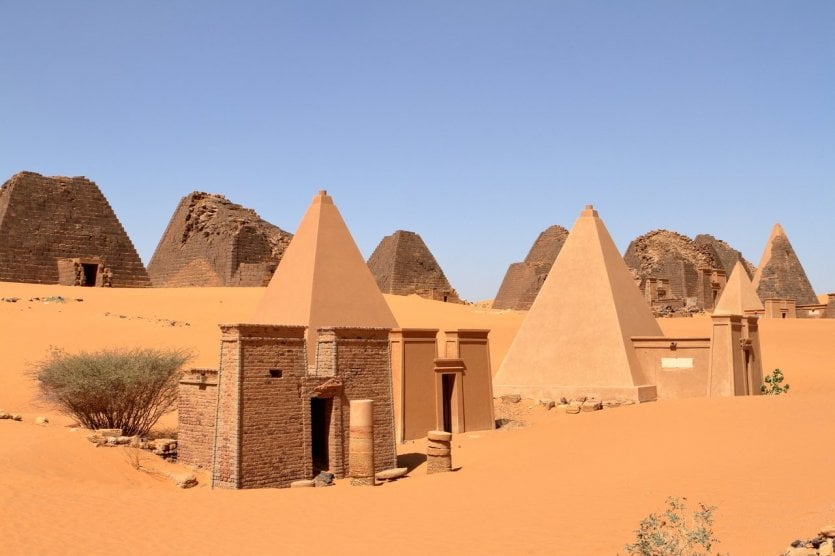
The pyramids of Meroe in Sudan's Sahara© hecke61 - Shutterstock.com
It's not just Egypt and South America that boast pyramids of great beauty. In the Sudanese desert, the pyramids and remains of Meroe are the best preserved of the ancient kingdom of Kush. Built in the 3rd century BC, they were discovered in 1822 by French explorers Pierre-Constant Letorze and Frédéric Cailliaud. This ancient capital of Nubia sits proudly among ochre-coloured sand hills, inviting visitors to stroll between its tombs and ruins. Although the construction of the pyramids is inspired by those found in Egypt, there are a few differences: they have steep slopes, are less imposing and have only one chamber for the royal corpse. The site has been a Unesco World Heritage Site since 2011.


